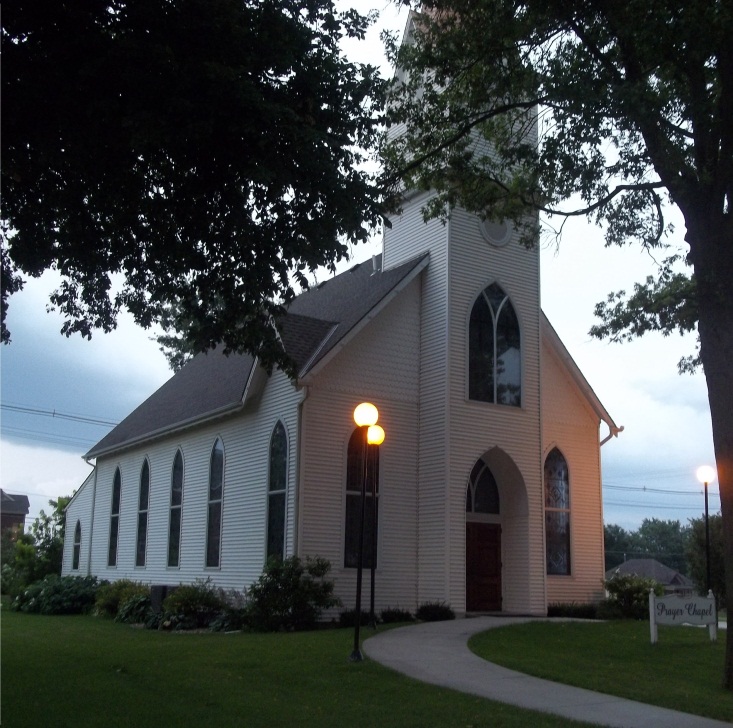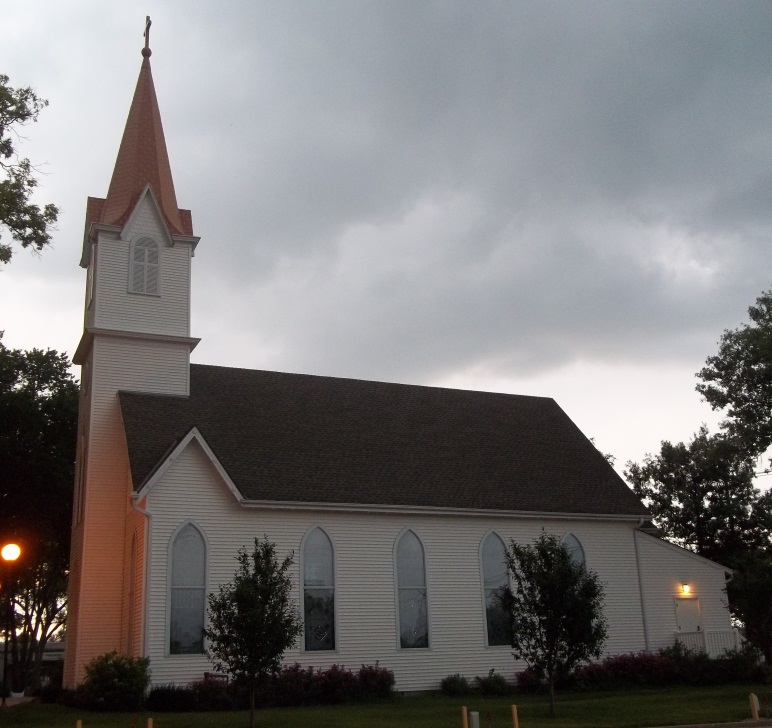



| Jacob Reetz | 1868 | Martn Reetz | 1868 | Henry Reetz | 1868 | ||||||
| Karl Reetz | 1885 | William Reetz | 1885 | August Hoffman | 1873 | Henry Marquardt | 1872 |
| Wilhelm Heiden, Sr. | August Sackschewsky | Henry Marquardt | |||||||||
| August C. Junge, Sr. | Emil Marquardt | August Hoffman, Sr. | |||||||||
| Wilhelm Conrad | Ferdinand Kaeding | Frederich Bloch |
The story of the pioneers who started St. Paul's Lutheran Church three-quarters of a century ago is like that of other early settlers. They traveled in covered wagons over dim trails from the river towns which were to be their trading headquarters for several years. That meant long and difficult hours of travel to secure supplies.
Deeply religious, the founders of St. Paul's, once they had secured homes for their families, determined that they must have a church of God where all might worship in union to express thanks to the Triune God for the favors he had given them in their new country.
Non-denominational meetings were being held in the various homes of the new community; but this was not enough for the little band of Lutherans who wanted their own church, their own Minister.
Inquiries and a study of the minutes of those first meetings which led to the establishment of St. Paul's church reflect the seriousness with which the elders approached their problem and how they solved it.
But even the minutes, painstakingly transcribed in long hours of work, fail to tell the whole story. Only stories of those early days, handed down from father to son through the generations, can give one the full impact of the sturdy characters of our forefathers. Unfortunately for history, our pioneers did not keep full accounts of their lives. What a history they would make, could they but be recounted in detail.
The first Lutherans to arrive in the community were John and Fredericka Heiden, Sr. and their family consisting of John Jr., Carl, Wilhelm, Christian, and his wife Marie and son, Wilhelm C., who settled 1 1/4 miles east of the present church site on October 15, 1868, together with August Schultz, his wife, Hulda, and their family.
Ferdinand Kaeding, a staunch Lutheran, decided to have Lutheran gatherings, and long before there was a resident pastor, the early Lutheran engaged a Christian teacher in the person of Mr. Kugland for the Lincoln Creek settlement several miles northeast of Hampton, Nebraska, who also taught reading, writing, and catechism.
On December 29, 1878, an organization was formed under the direction of the Rev. G. Endres - the organization to be known as The German Evangelical Lutheran Church.
Ten acres, which today constituted the grounds of St. Paul's church, were purchased from the B & M Railroad for $50 on Feb 3, 1879.
Early in 1880 a church cemetery committee was chosen. The church building was nearing completion and was to be dedicated Pentecost Sunday, May 2, 1880. Sunday school was started with August Hoffman, Ferdinand Kaeding and Wilhelm Conrad as teachers.
In June 1901 it was decided by a church committee to start the process of building a new church as the old one has become much too small to accommodate the growing congregation.
The 25th anniversary of the congregation was observed in 1903 with three services. The 50th anniversary was celebrated on June 2, 1929.
(Printed in an Old York Co. Atlas)